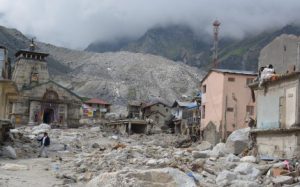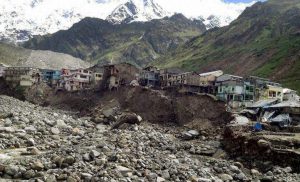US President Barack Obama unveiled his long-awaited plan for tackling climate change on Tuesday, focusing on three main areas: domestic mitigation efforts, domestic adaptation responses, and international cooperation with other countries.
Significantly for climate watchers outside the US, the plan devotes a third of its space to international climate cooperation. "Achieve significant global greenhouse gas emission reductions…through major international initiatives focused on spurring concrete action, including bilateral initiatives with China, India, and other major emitting countries," reads the international part of the plan.
Not surprisingly, “China” comes up five times in the plan; it is already clear that Sino-US climate cooperation will be a key feature of the Obama administration for the rest of his presidency.
The conversations have already begun between the world’s two largest emitters. In April, as a result of Secretary of State Kerry’s visit to Beijing, a climate change working group was established under the US-China Strategic and Economic Dialogue (S&ED). As mandated in the joint statement issued by the two countries, the working group will present its outcomes in July.
Can US-China deal be made?
The question that has to be asked here is how many real tons of greenhouse gas emission reduction will be brought by the US-China joint initiative as well as other international cooperation proposed in the plan. And if the actions outlined in the plan offer a glimpse of the level of his ambition, it suggests that the plan should be the beginning of US action on climate change, rather than the finish line.
Despite the fact that this plan is labeled as a “new” push from the White House, it is essentially an attempt to bring US emissions back to the country’s “old” Copenhagen commitments. Meanwhile, there are still some key battles ahead. Taking the biggest issue – measures on existing power plants – as an example, EPA will propose CO2 emission regulations on these plants by mid-2014 and expect to finalise the rules in 2015. The plan launches a process within which there are still plenty of legal uncertainties and political resistance.
Given the paralysed state of Congress, Obama’s bold action is nevertheless a hard but crucial move in a moment when the world is facing a collective leadership vacuum. While we applaud that there is finally a small step forward from the US, we should also be mindful that the urgency of the climate problem does not allow us to celebrate much.
What is more important perhaps is that the President did not address what he plans to do for the post-2020 period. Under the UNFCCC, the 2015 deadline for “all parties” to put their post-2020 commitments on the table is only two and a half years away; the U.S along with other countries has to work harder multilaterally if these are to be achieved.
With regard to Sino-US cooperation, the same question applies. To have this bilateral cooperation deliver real emission reductions and help both countries get back to their pledged emission trajectories (neither are on track at the moment for their Copenhagen pledges, with the US having a much bigger risk of not delivering), the joint works that will be outlined in July must be additional. The actions from this initiative must require concrete and substantial emission reductions; otherwise the two big carbon heavy giants will fail to “inspire”.
China’s climate plans
China should also be more proactive and not let the bilateral cooperation become a one-man show. Indeed, given the daunting environmental challenges, the country should have more incentives to conduct a large scale surgery on its energy sector.
As a recent briefing from the World Resources Institute put it, there are already plenty of reasons for China to act itself: the prioritisation of environmental policies, to maintain economic competitiveness, ensure energy security, and prevent the adverse impact of climate change – to name just a few internal drivers.
On top of that, when it comes to moving away from fossil fuels, there is considerable domestic demand for this. The recent air pollution episodes ring a loud and clear alarm bell. As citizens in Chinese most populous and advanced cities literally choke to death from coal plant emissions, even if the climate can take more greenhouse gas emissions (which it can’t, as we’ve passed 400 ppm), the people are not going to. Our current energy path needs to be dramatically shifted. A more ambitious coal reduction plan has to be immediately introduced and implemented. Our country should do it rather than wait for others to do so.
We can look across the Pacific, seeking ambition and leadership, but as the world’s number one emitter we should also find it in ourselves. There may be many lessons China can learn from the US, but when it comes to tackling climate change, the country can and will have to do better than what Obama proposed on Tuesday.






